Are you tired of using the same old traditional pencils day after day? Maybe it’s time to consider upgrading to a mechanical pencil.
While traditional pencils have been a staple in classrooms and offices for decades, mechanical pencils offer a modern twist with added convenience and durability. With a mechanical pencil, you’ll never have to sharpen your pencil again. The lead is advanced with the click of a button, which saves time and keeps your workspace clean. Plus, mechanical pencils are known for their durability, as they can withstand being dropped or tossed around without breaking.
But don’t count traditional pencils out yet – their classic appeal and writing quality still have unique benefits.
So, which is honestly better – mechanical pencils or traditional pencils? Let’s take a closer look.
Key Takeaways
- Mechanical pencils offer convenience, durability, and precision, while traditional pencils offer unique artistic potential and versatility.
- Each type of pencil has its specialty uses, and the choice ultimately depends on personal preference and the task.
- Mechanical pencils are ideal for consistent, precise lines, while traditional pencils are great for achieving a soft, blended effect and creating textures and patterns.
- Sharpening a traditional pencil can be therapeutic and provide a sense of control over the outcome of your work.
Understanding the Differences between Mechanical and Traditional Pencils
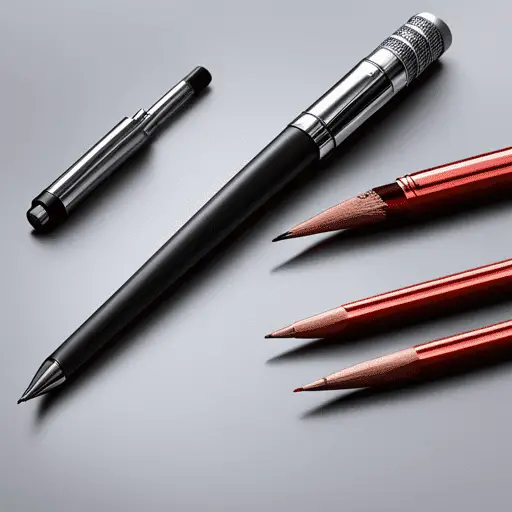
Don’t know the difference between mechanical and traditional pencils? You’re missing out on a whole new level of writing and drawing!
Unlike traditional pencils that require sharpening, mechanical pencils have a lead that is advanced by clicking a button or twisting a knob. This makes them perfect for precision work and detailed drawings, as you can control the lead thickness with ease.
Furthermore, mechanical pencils have a variety of lead thicknesses available, ranging from 0.3mm to 2.0mm, depending on your needs. Another advantage of mechanical pencils is their lead refillability. You don’t have to throw away the entire pencil when the lead runs out; instead, you buy a pack of lead refills and continue using the same pencil.
This saves you money in the long run, reduces waste, and is better for the environment. With all these benefits, it’s no wonder why mechanical pencils are becoming increasingly popular among artists, students, and professionals alike.
Speaking of benefits, let’s talk about the durability and convenience of mechanical pencils.
Durability and Convenience of Mechanical Pencils
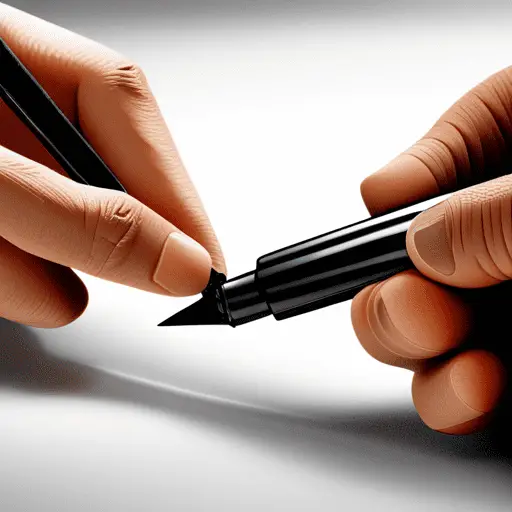
You may have wondered if it’s easier to use and maintain a mechanical pencil, and if it lasts longer than a traditional one, especially when you’re constantly writing, erasing, and sharpening. The answer is yes! Mechanical pencils are built to withstand heavy use and abuse, making them a more durable option than traditional pencils.
Here are some reasons why:
– Mechanical pencils don’t require sharpening, so they won’t become dull over time. This is especially important if you’re using them for school or work, where you may write for hours.
– Mechanical pencils are refillable, which means you can use them for a long time without buying a new one, making them a more cost-effective option in the long run.
– Mechanical pencils are more environmentally friendly than traditional pencils, as they don’t require you to throw away the wooden casings constantly. This is important if you want to reduce your carbon footprint and be more conscious of your environmental impact.
– Mechanical pencils are more convenient than traditional pencils, as they have a built-in eraser. This means that you don’t have to carry a separate eraser with you, which is especially useful if you’re on the go.
In addition to their durability and convenience, mechanical pencils have a modern, sleek appeal that many people find attractive. However, that doesn’t mean that traditional pencils have lost their classic appeal.
In the next section, we’ll take a closer look at the benefits of using traditional pencils.
Traditional Pencils and Their Classic Appeal
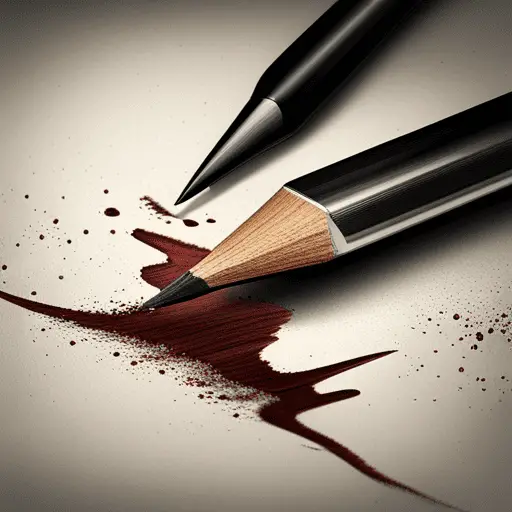
Now let’s talk about the timeless charm of using good old-fashioned pencils. There’s something about the feel of a wooden pencil in your hand, the scent of freshly sharpened lead, and the satisfying scratch on paper that a mechanical pencil can’t replicate. The nostalgia factor alone makes traditional pencils a favorite among many artists and writers.
But it’s not just about the sentimental value. Traditional pencils also offer unique artistic potential. With a range of graphite hardness levels and the ability to easily blend and shade, traditional pencils allow for a level of creativity and expression that mechanical pencils can’t match. Plus, there’s something special about the imperfections of using a conventional pencil – the smudges, the eraser marks, and the character added to a piece of work.
When it comes to writing quality and performance, traditional pencils may not be as precise or long-lasting as their mechanical counterparts. However, the classic appeal and artistic potential that come with using a traditional pencil make it a valuable tool for anyone who values creativity and nostalgia in their work.
Writing Quality and Performance
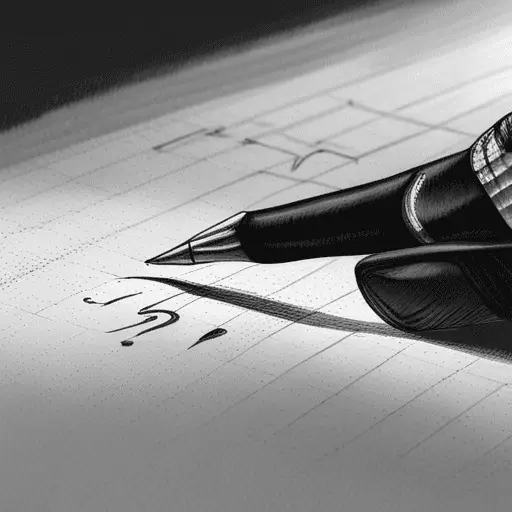
When it comes to writing quality and performance, you’ll find precision and consistency with mechanical pencils, while traditional pencils offer to shade and blending abilities. Each type has particular uses that make it the perfect choice for certain tasks.
Whether you’re a student, artist, or professional, understanding the unique benefits of each type will help you achieve your desired results with ease and confidence.
Precision and Consistency of Mechanical Pencils
The precision and consistency of mechanical pencils are unmatched, making them ideal for artists and designers who require exact lines and measurements. With their ergonomic design and lead refills, mechanical pencils provide a comfortable grip and a continuous supply of lead, ensuring that every line is perfectly straight and every measurement is precise.
It’s no wonder that renowned architect Frank Gehry exclusively uses mechanical pencils for his intricate sketches. The beauty of mechanical pencils lies in their ability to produce consistent lines with every stroke. Whether drawing a blueprint, outlining a design, or simply jotting down notes, mechanical pencils offer unparalleled accuracy that traditional pencils cannot match.
However, while mechanical pencils excel in precision, they may not be the best option for shading and blending. Let’s explore this further.
Shading and Blending with Traditional Pencils
Using traditional pencils to achieve a soft and blended effect in your artwork would be best. While mechanical pencils are great for precise lines and consistent shading, traditional pencils offer a wider range of techniques for shading and blending. With traditional pencils, you can create a variety of effects by varying the pressure, angle, and direction of your strokes.
One of the benefits of traditional pencil lead grades is that they allow you to create different shades and tones with ease. Below is a table that shows the different lead grades and their corresponding levels of hardness and darkness. Using different rates of pencils can achieve various effects, from light and airy to dark and dramatic. Additionally, traditional pencils can be sharpened to a fine point or a blunt edge, depending on the effect you want to achieve. So, traditional pencils are a great choice if you want to create a soft and blended look in your artwork.
| Lead Grade | Hardness | Darkness |
|---|---|---|
| ———— | ———- | ———- |
| 9H | Hardest | Lightest |
| 8H | ||
| 7H | ||
| 6H | ||
| 5H |
In contrast, mechanical pencils are better suited for precision and consistency. In the next section, we’ll explore specialty uses for each pencil type.
Specialty Uses for Each Type
Let’s explore the unique abilities of each pencil type, like how a painter selects different brushes to create specific strokes and textures on their canvas.
Mechanical pencils are perfect for technical drawings, especially when precision is key. Their fine lead points (ranging from 0.2mm to 0.9mm) make them ideal for drawing straight lines, creating sharp edges, and achieving accurate measurements. They never need sharpening, and their consistent lead thickness prevents the problem of breaking the lead.
On the other hand, traditional pencils have their particular uses. These are perfect for calligraphy, sketching, or shading. A traditional pencil’s graphite can achieve a range of tones, from light to dark, which is ideal for shading and blending. They are also great for creating textures and patterns, especially when using a variety of lead grades. Furthermore, they are more versatile than mechanical pencils as they can be used on various surfaces, from paper to wood.
So, whether you’re looking for precision in technical drawings or versatility in shading and sketching, knowing the unique abilities of each pencil type will help you choose the right one for your needs.
Choosing the Right Pencil for Your Needs
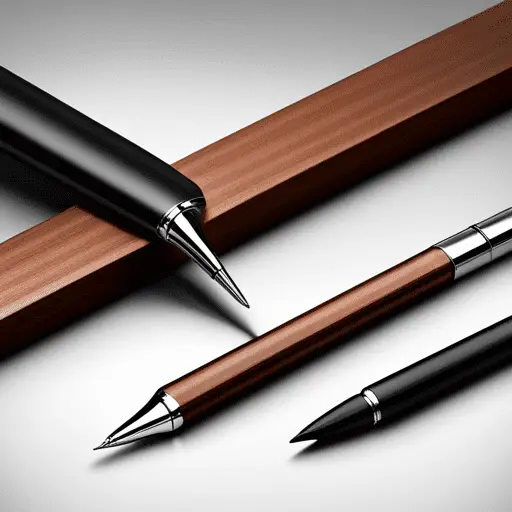
When deciding which pencil to use, it’s important to consider your specific needs and preferences to achieve the best results.
If you write or draw for long periods, you may want to consider an ergonomic mechanical pencil that reduces hand fatigue and strain. These pencils are designed to fit comfortably in your hand and provide a smooth writing experience. Additionally, mechanical pencils usually come with lead refills, so you won’t have to keep sharpening your pencil and can focus on your work instead.
On the other hand, a classic wooden pencil may be your best option if you prefer the traditional feel of a pencil. These pencils are versatile and can be used for writing, drawing, or shading. They also come in various hardness levels, which can affect the darkness and durability of your lines.
While they may require sharpening, the act of sharpening a pencil can be therapeutic for some, and it can also provide a sense of control over the outcome of your work.
Ultimately, the choice between a mechanical pencil and a traditional pencil comes down to personal preference and the specific needs of your project.
Frequently Asked Questions
Can mechanical pencils be used for artistic or detailed drawings?
“Unlock your artistic potential with mechanical pencils. These versatile tools are perfect for artistic applications and precision drawing. With their slight lead and comfortable grip, you’ll easily create intricate and detailed masterpieces.” ‘Whether you’re a professional artist or just starting out, mechanical pencils are a must-have tool in your creative arsenal.’
Are there any environmental concerns when it comes to using traditional pencils versus mechanical pencils?
Regarding traditional pencils, deforestation concerns arise due to the need for wood. However, recycling options exist for conventional and mechanical pencils, making them eco-friendly. Choose one that suits your needs.
How do the costs of using mechanical pencils compare to traditional pencils over time?
When it comes to a long-term cost comparison, consider the durability and lifespan of your pencil. Mechanical pencils may cost more initially but can last longer and save money in the long run. Plus, they offer innovative features for a satisfying writing experience.
Are there any unique features or benefits of using traditional pencils that cannot be replicated with mechanical pencils?
Traditional pencils offer the advantage of being able to write on various surfaces, including wet or oily ones. However, mechanical pencils offer unique uses such as precise lines and erasable ink, and both options benefit different tasks.
Can mechanical pencils be refilled or are they disposable?
Did you know that many mechanical pencils can be refilled with lead and erasers, making them a more sustainable option than traditional pencils? Look for refillable options and feel good about your eco-friendly choice.
Conclusion
So, which pencil is better for you? Both mechanical and traditional pencils have their own unique advantages and disadvantages, and it all comes down to personal preference and the purpose of usage.
The mechanical pencil might be your go-to if you value durability and convenience. If you love the classic appeal of a wooden pencil and enjoy sharpening it, then traditional pencils are perfect for you.
Ultimately, the choice is yours to make. Whichever pencil you choose, make sure it suits your writing needs and preferences. After all, writing is an art, and the right tool can make all the difference.
So, pick your weapon – a mechanical pencil or a traditional one – and let your words flow like a river. Remember, the pencil is mightier than the sword, and you can conquer the world with the right one in your hand!
